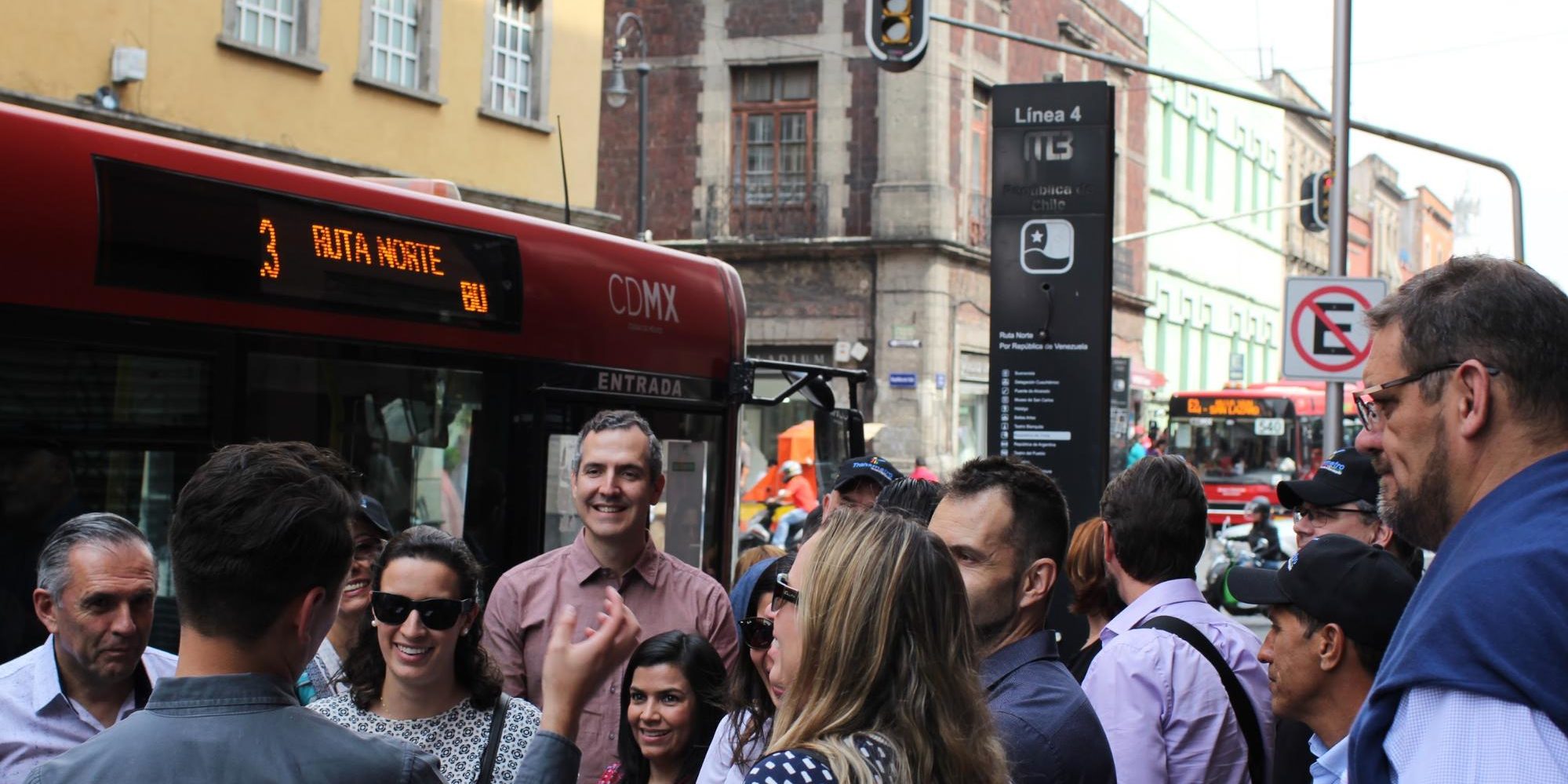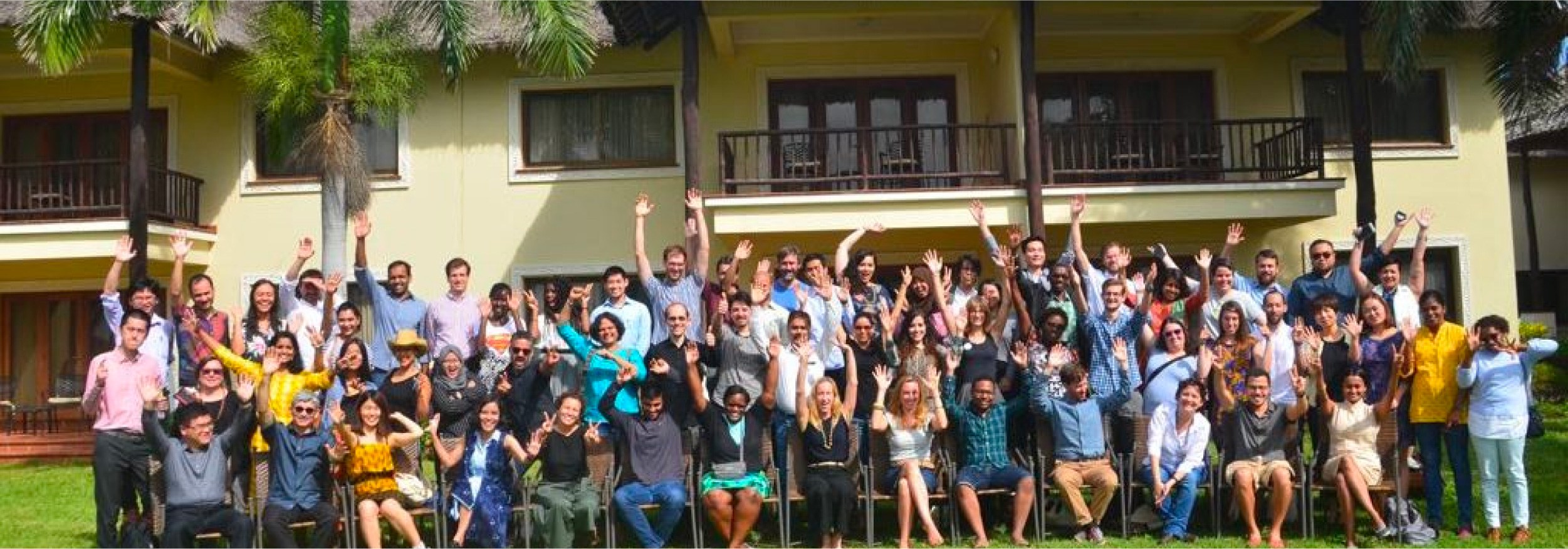 Since BRT was born in Latin America in 1974 in Curitiba, Brazil, more than 20 systems have opened and are currently operating in Latin America, with key systems in Bogota and Quito now over 15 years old. Much of the focus on BRT, from advocates to planners and engineers to politicians, has traditionally been on planning and designing the BRT corridor just to reach the “ribbon-cutting” phase with little thought to sustaining operations afterwards. Cities and system operators often struggle with maintaining high-quality operations and integration in order to continue to attract ridership.
Since BRT was born in Latin America in 1974 in Curitiba, Brazil, more than 20 systems have opened and are currently operating in Latin America, with key systems in Bogota and Quito now over 15 years old. Much of the focus on BRT, from advocates to planners and engineers to politicians, has traditionally been on planning and designing the BRT corridor just to reach the “ribbon-cutting” phase with little thought to sustaining operations afterwards. Cities and system operators often struggle with maintaining high-quality operations and integration in order to continue to attract ridership.
To address these issues with the region that has the most experience with BRT, ITDP convened a group of practitioners and decision makers to discuss the state of BRT from October 31- November 1, 2018 in Mexico City. This experience-sharing workshop was supported by the Transformative Urban Mobility Initiative (TUMI) and the German Federal Ministry of Economic Cooperation and Development (BMZ). The workshop aimed to discover common operational problems and disseminate better BRT operation strategies that can be expanded or replicated into other systems, including in other regions such as Asia and Africa. In order to enrich the dialogue, experts and partners from WRI Brazil, WRI Mexico, BRT Center of Excellence, and 100 Resilient Cities were also invited and presented case studies, summing a total of 30 participants.
The workshop was based on the presentation of twelve case studies by eleven different cities from six Latin American countries:
- México City and Puebla from México
- Belo Horizonte, Fortaleza, Rio de Janeiro, and São Paulo from Brazil
- Santiago from Chile
- Barranquilla and Bogotá from Colombia
- Quito from Ecuador
- Guatemala City from Guatemala
From the 12 studies, ITDP selected the cases that responded the most to the systems’ main challenges and populated the responses in the graphs seen below:
Most relevant BRT and bus-based systems challenges according to a survey conducted with over 20 Latin-American managers
Strategies presented included solutions for operations funding, institutional integration, fare evasion, frequent bus network design, regularity on both trunk and feeder lines, and tactical interventions for improved access among others. Service regularity was the most recurring technical topic mentioned in the discussions. According to participants and experts, offering rapid services on trunk routes is not enough. Especially as new and competing transport modes arise, it is imperative that users are confident that service will be consistent from starting point to destination. This need imposes a special challenge for trunk and feeder systems and routes that run in mixed-traffic.
A few Latin American cities are implementing strategies to combat this problem. Bogotá’s TransMilenio is working on improving the precision of inter-corridor routes’ cycle time through the use of statistical methods, while Belo Horizonte has recently deployed simple measures such as shifting feeder routes’ control points from the neighborhoods to the terminals to guarantee on schedule departure times from terminals during peak times. São Paulo has implemented continuous operational procedures that give more control to the transit agencies instead of private operators, including advance knowledge of which bus and driver are assigned to specific routes. The BRT Centre of Excellence is testing new technologies in Santiago (and Sweden) that should make it easier for drivers to know whether they should go faster or slower in order to keep route service punctual and consistent.
Reliable service is one of the most important factors in gaining ridership and innovative and holistic approaches are necessary to achieve reliable service. However, these approaches do not always involve new technology. The city of Barranquilla invested in a culture strengthening program that allocated staff to system stations. The staff provided educational information for the users regarding fare media usage, respecting the system preferential seats, and queueing in stations. The program used this educational approach instead of simply enforcing and fining bad behavior, resulting in reduced fare evasion and vandalism to the system. Guatemala converted important streets near the BRT main stations into pedestrian-only, improving access, facilitating commercial activities and services to flourish and improve security. Learning from the implementation of the first Metrobus, Mexico City started to implement a series of improvements for pedestrian access to new corridor stations. During the workshop, participants visited the thriving areas around Metrobus lines 3 and 4 in downtown Mexico City.
The road to reliable, seamlessly integrated and attractive BRT and bus-based systems is complex and multidisciplinary. The convening of high-level BRT and bus system managers from key Latin-American cities where these systems are more mature represents a unique opportunity to improve operational strategies to increase the longevity of the BRT systems. With participants’ know-how, specially tailored peer exchanges, and international experts’ inputs, the workshop allowed decision makers to increase their ability to advance on their own technical and governance issues. At the same time, conclusions distilled from the discussions will also prove beneficial to systems operating in other world regions in subsequent years. The workshop was a small but important step on the road to global BRT system transformation that highlighted the necessity to continue the development of spaces for dialogue between different entities involved in the planning, implementing, and operating public transport systems to guarantee the development of more sustainable and inclusive cities and metropolitan regions around the world.






